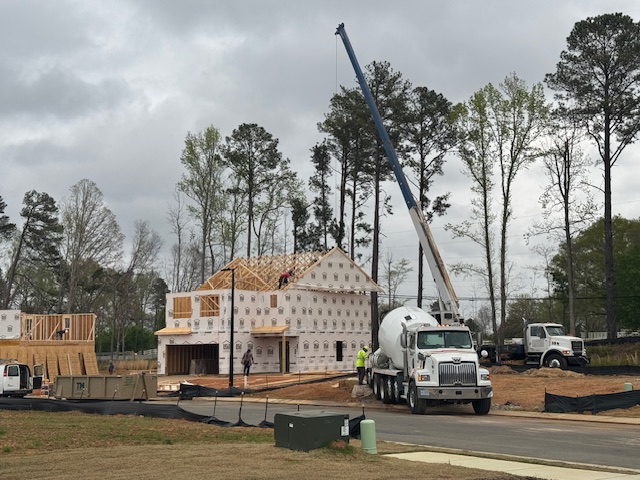The U.S. housing market is entering the spring season with significant challenges. Recent data shows that both homebuilders and buyers are feeling the effects of economic uncertainty and rising costs.
Homebuilders Report Declines
Major homebuilders are experiencing notable downturns. KB Home reported a 5% decrease in revenue for the first quarter of 2025, with net income falling by 21% compared to the previous year. The company delivered 2,770 homes, a 9% drop from the prior year. Similarly, D.R. Horton saw a 15% decline in net sales orders and home closings, attributing the slowdown to cautious buyer behavior amid affordability concerns.
Construction Activity Slows
According to the U.S. Census Bureau, single-family housing starts in March fell by 14.2% from February, marking the largest monthly decline since April 2020. This slowdown reflects the broader challenges facing the construction industry.
Price Gap between New Construction and Resale Homes Narrows
Builder Confidence Remains Low
The National Association of Home Builders (NAHB)/Wells Fargo Housing Market Index rose slightly to 40 in April, up one point from March. However, any reading below 50 indicates negative sentiment among builders. Builders cite rising material costs and economic uncertainty as primary concerns.
Rising Material Costs Impact Construction
Tariffs have led to increased costs for building materials. On average, suppliers have raised prices by 6.3%, adding approximately $10,900 to the cost of constructing a single-family home. These additional expenses are challenging for both builders and buyers.
Tariffs Introduce Market Uncertainty
On April 2, President Donald Trump announced new tariffs, including a 10% baseline on all countries and higher rates for nations with significant trade deficits with the U.S. China faces a combined tariff rate of 54%. These policies have introduced volatility into the markets, affecting various sectors, including housing.
Consumer Sentiment Declines
A Redfin survey indicates that 55% of Americans are less likely to make major purchases this year due to tariff concerns. Additionally, the University of Michigan’s Consumer Sentiment Index dropped to 50.8 in April, the lowest level since June 2022.
Mortgage Applications Decrease
The Mortgage Bankers Association reports that mortgage applications fell by 8.5% for the week ending April 11, reflecting decreased demand in the housing market. Furthermore, the average rate for a 30-year fixed mortgage increased to 6.83%, up from 6.62% the previous week.
Sellers Remain Optimistic
Despite these challenges, many homeowners believe it’s a good time to sell. A Realtor.com survey found that 70% of potential sellers think now is a favorable time to list their homes. Data from Altos Research also shows an increase in new listings, suggesting that sellers are eager to take advantage of current market conditions.
Looking Ahead
The housing market is facing a complex mix of factors, including economic policies, consumer confidence, and construction costs. While some indicators show resilience, the overall outlook remains uncertain as the industry navigates these challenges.

